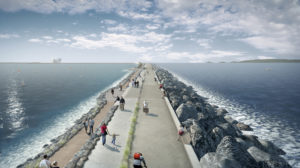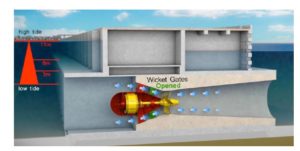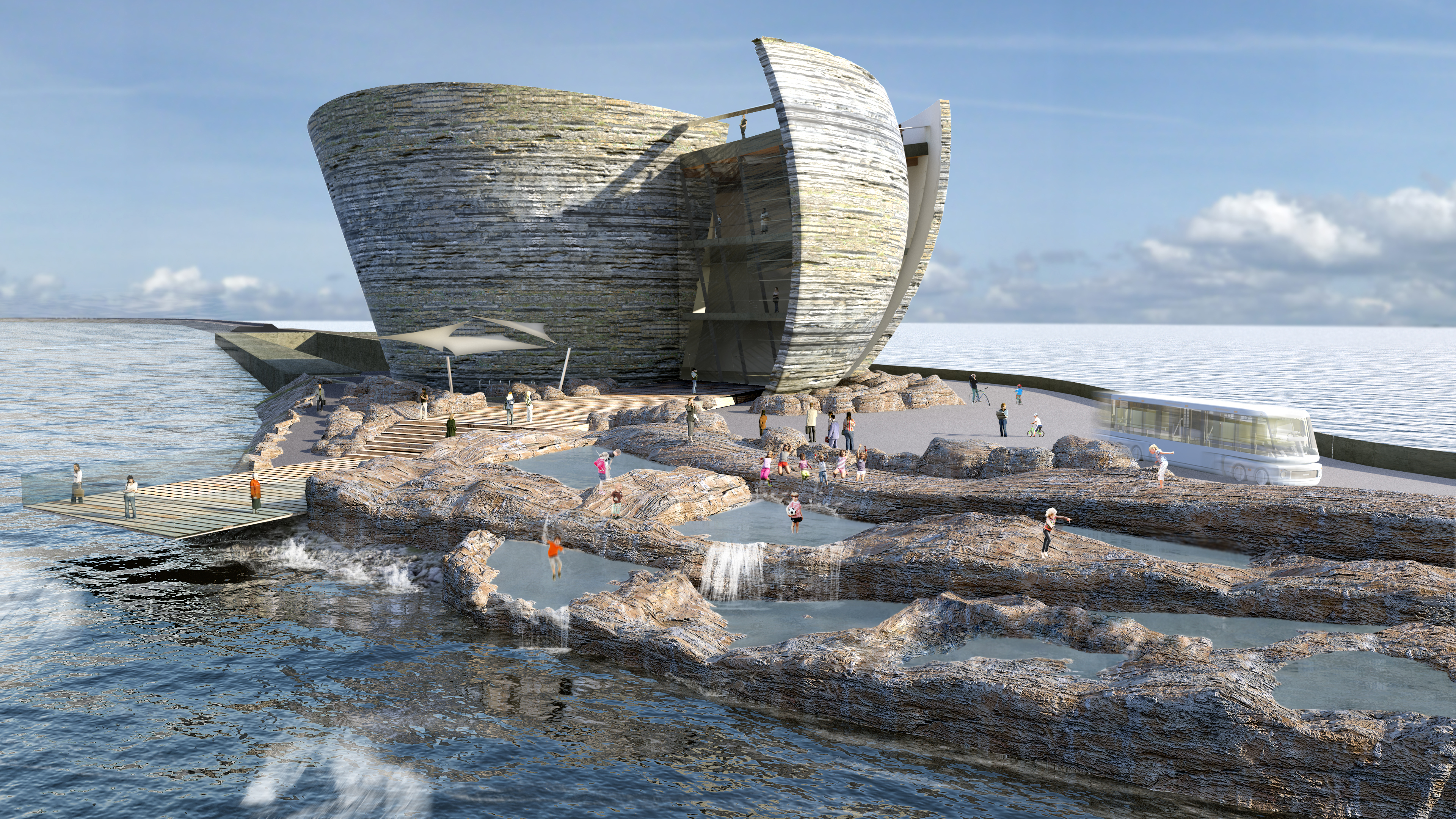Tidal Lagoon PLC is, as the name suggests a private company looking to transform the face of Britain’s energy generation by building a network of tidal lagoons, with the first to be built in Swansea. The eventual goal is to create six lagoons that would collectively generate eight per cent of the UK’s energy needs.
It would be the world’s first tidal lagoon, which has a critical advantage in comparison to wind and solar in that it is able to offer a consistent source of energy generation and hence does not suffer from intermittency. Tides are caused by a combination of gravitational forces enacted by the moon and are therefore highly predictable.
In the long term the company hopes to export the technology to territories including France, India and Mexico, identified as being particularly suitable locations for tidal power.

The company is the brainchild of Mark Shorrock, a green energy entrepreneur who launched the company in 2011. Prior to entering the energy business Shorrock was a film producer, having started his career as a journalist. He is the husband of Juliet Davenport, the founder and CEO of Good Energy Group.
The proposed project at Swansea will cost £1.3 billion. £200 million of this is to be raised through a raft of investment funds and high net worth individuals, with the remainder to come from a debt funding round. Cardiff Bay meanwhile is expected to cost circa £8 billion. Investors on the equity side are led by Prudential while Australian heavyweight Macquarie is the bank that will lead the debt round.
Tidal lagoons are similar in principle to a tidal barrage. Tidal barrages capture energy from a moment of high tide and releases the water when the tide is low. Turbines are used in barrages to capture the energy from the release of the water to generate electricity.
The difference between a barrage and the proposed lagoons is that the lagoons are enclosed in an area by the coastline As the tide comes in gates hold off water from entering the lagoon. Once there is a sufficient difference in height between the water in the lagoon and the water in the sea, the water is released, turning a turbine and generating electricity.
One important factor in their construction is the distance to a suitable connection to the National Grid.
The company says that the proposed plans will enable the tide to be held in the lagoon for two and a half hours. As the tide flows out the turbine also turns as the structure releases water back into the sea.

£35 million has been spent on the Swansea project so far, with the company hoping to begin construction in 2018. The maiden project will generate 320 megawatts of power, enough for 155,000 homes, or over half the population of Swansea. The project is expected to take four years to build, with generation beginning in year three of the work, according to the company.
In the long term, future locations for tidal lagoons include the Liverpool bay, North Wales and the North West of England.
Once/if the project gets up and running it is expected that it will generate energy at a price of £96.5 per kilowatt hour, slightly more than the £92.5 per kilowatt hour provided by Hinkley Point C.
Critical to the Swansea Bay story is the Hendry Review carried out by Charles Hendry, the former Minister of State for Energy and Climate Change. The review is available in full here.
The report itself was commissioned by the government to investigate if the tidal lagoon was a wise use of taxpayer money (it is privately funded but will require some subsidies).
Hendry notes in his report that one of the critical advantages of tidal lagoons is their ability to provide energy long after many offshore wind farms have been decommissioned. Although he notes that is “ironically their greatest challenge, as it is precisely this longevity which makes comparisons with other technologies so difficult”.
Critically, although offshore wind is a high growth industry in the UK and the UK is the largest producer of offshore wind on the planet, the major companies in the offshore wind space are all Danish (Vestas/Dong Energy) Swedish (Vattenfall) or German (Enercon/Volkswind/Siemens Gamesa).
The difference with tidal technology is that the UK would have a one of a kind opportunity to be a leader in this field, with the related synergies that would result from it in everything from engineering to content and design. The additional lagoons proposed by the company would be built at Cardiff, Newport, West Cumbria, Colwyn Bay and Bridgwater Bay.
There are many interesting aspects to the Swansea Bay project in terms of the opportunity to bring thousands of jobs to the region (South Wales is one of the poorest regions of the UK). In addition the aforementioned synergies around creating a hub of innovation are hard to model as related industries are likely to build up around such a hub.
However the Tidal Lagoon Power project is also expecting to market it as a tourism hotspot, in particular for water sports. Swansea already has a very lively nightlife centred around a strip of bars and clubs on a street named Wind Street. It’s not an obvious place for domestic or overseas visitors however a lively water sports industry combined with its existing nightlife attractions present obvious opportunities.
In terms of the cost of the project on a kilowatt per hour basis, it is worth mentioning that technological improvements in tidal power should result in falling costs, a reasonable assumption given the extreme falls in the cost of offshore wind power over the last five years.
There are some environmental concerns around the site, which from my understanding relating both to the impact on the local fish as well as to the development of a quarry in Cornwall which will be needed to ship rock to South Wales.
The Swansea Bay project will require a 90 year CFD (contract for difference). The reason for the 90 year CFD is that it would lead to a higher strike price for the project, which would see it compare unfavourably with offshore wind and nuclear. Given that the tidal lagoon is expected to last for 120 years this means that there will be 30 years of subsidy free power.
The report by Hendry focuses on security of supply and a breakdown of costs and the impact on employment through the opportunities provided across the supply chain. However some consideration of the security and social costs of the obvious alternative (nuclear) should also be considered.
Nuclear power presents a number of challenges given the public worries that developed following the Fukushima disaster. At the time of writing the security threat from Islamic militants to the UK remains a high concern, and given the additional security needed to protect nuclear power stations from militants it is worth considering this in the assessment of tidal lagoons.
The tidal lagoon scheme at Swansea is awaiting a decision by the government on whether or not it should back the project and go ahead with a CFD. Clearly, the project is not without its risks, in particular the duration of the CFD (90 years).
However as this represents a one off opportunity to help forge what could be a world leading expertise in tidal power as well as help meet the energy needs of the UK through providing a reliable form of low carbon energy Renewables Investor argues that the benefits clearly outweigh the negatives.
In particular, the opportunities for falling costs as time progresses would suggest that a maiden project holds the ability to revolutionise the UK renewables market and generate employment, energy and a way to meet the UK’s targets on reducing our carbon emissions.

Be the first to comment on "Swansea Bay Tidal Lagoon"